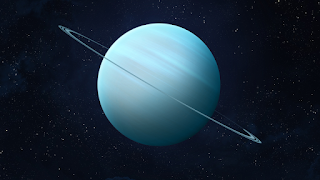The 8 Planets
Mercury is both very hot and very cold.
Mercury has many craters on its surface due to its thin atmosphere.
It only takes Mercury 88 days to revolve around the sun but slightly more than 58 days to rotate on its axis.
Venus is the hottest of all of the planets
Venus has no moons or rings
On Venus the sun rises in the west and sets in the east because Venus spins backwards on its axis.
Earth
About ⅔ of the Earth is water.
Only 3% of the Earth’s water is freshwater.
Earth's atmosphere is 78 percent nitrogen, 21 percent oxygen and 1 percent other ingredients—the perfect balance to breathe and live.
Mars is the ‘red planet’ because of rust in its soil.
There are no rings around Mars.
Mars makes an orbit around the Sun in 687 Earth days.
Jupiter has more than 75 moons.
Jupiter rotates once about every 10 hours but takes about 12 Earth years to complete one orbit of the Sun.
Jupiter is a gas giant and so lacks a solid surface.
Saturn
Saturn's atmosphere is mostly of hydrogen (H2) and helium (He).
Saturn has a total of 62 moons.
Saturn has a spectacular ring system, with seven rings and several gaps between them.
Uranus
Uranus gets its blue-green color from methane gas in the atmosphere.
The first planet found with the aid of a telescope,
The axis of Uranus is tilted 98 degrees, meaning it essentially spins on its side.
Neptune
Neptune takes about 16 hours to rotate once and about 165 Earth years to orbit the sun
The methane gas in the atmosphere gives Neptune its blue color
Neptune is very cold and has the coldest average temperature of the planets.
The average temperature on Neptune is about minus 200 degrees Celsius. (minus 392 degrees Fahrenheit).






.png)


0 comments:
Post a Comment